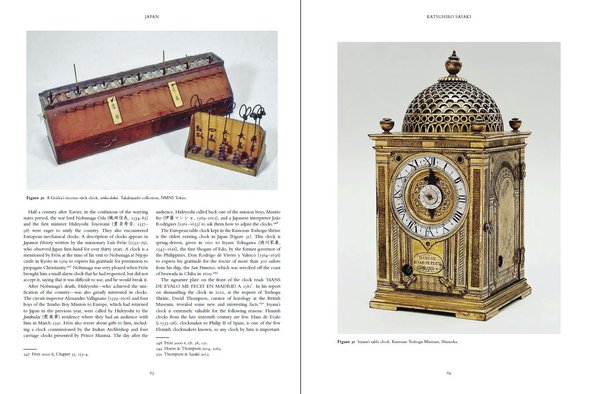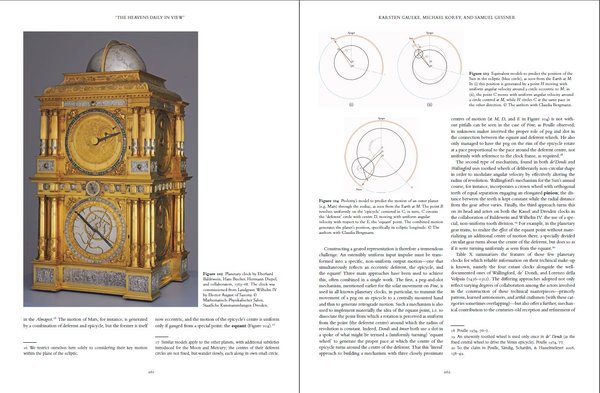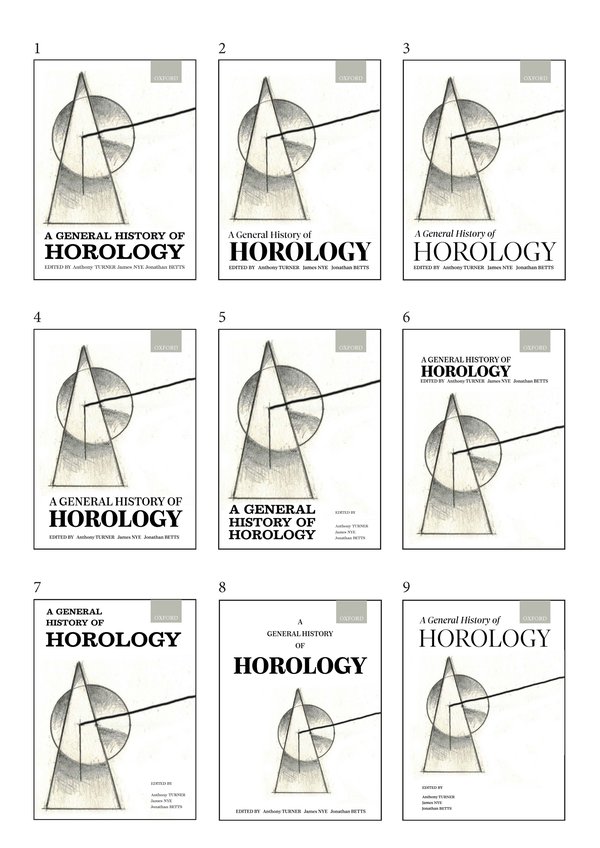The AHS Blog

The creation of 'A General History of Horology'
This post was written by James Nye
Winston Churchill wryly commented, ‘Writing a book is an adventure. To begin with it is a toy and an amusement. Then it becomes a mistress, then it becomes a master, then it becomes a tyrant. The last phase is that just as you are about to be reconciled to your servitude, you kill the monster and fling him to the public.’

The emergence of Oxford University Press’s General History of Horology has echoed some of these observations. The editors do not necessarily agree, but I believe it was first in a bar in Pasadena, during the 2013 NAWCC conference on ‘Time for Everyone’, that Anthony Turner first broached the idea of a major work on the history of horology. I think everyone smiled politely.
Years later, in October 2016, he asked me if I would help, as his ideas were formulating and he had already managed to get Jonathan Betts interested in collaborating. However, both of us told Anthony that we were heavily committed, and I can see our emails were more than a bit tentative.

In June 2018, Anthony was back in touch, as he had now convinced OUP to get on board with the project. We met at a London hotel in July that year, and over a convivial and euphoric dinner Betts and I agreed to get fully on board as advisory editors and a firm proposal went to OUP.
August 2018 saw the beginnings of establishing the wider team of authors. The book ended up with thirty-five writers, though originally there were more.

In November 2018, OUP came back with comments from the external referees who had examined the proposal. One of them was hoist with his own petard when Anthony insisted that the referee himself fill a gap that he had indicated in the work.
A manuscript delivery deadline was set at December 2019. A draft contract emerged in January 2019, between OUP, the editors, and each contributor, eventually signed off in August 2019.
By May 2019, authors were beginning to discuss chapters with each other. It was at this point – when the euphoria had faded – that I recall joint authors were beginning to admit to each other they had bitten off what seemed like more than they could chew.
Helpfully, there were positive discussions with Sotheby’s on sponsorship. This allowed us to have colour illustrations throughout and a professionally compiled index.
Over the following months, draft chapters were beginning to fly around. Some of these were written in other languages, and needed translating to English. And more than a few were penned by Anthony himself, of course.
We had eight chapters in all by September 2019, but at this point we were also losing authors, who realised that other commitments stood in their way. And other authors were commenting, ‘Yes, I really must get down to some work!’
Unfortunately, one scholar from whom we had hoped to have a lengthy contribution died even before we could invite him. Health problems held up contributions from others.
The submission deadline shifted to late February 2020 to give us a chance to edit the whole work and to submit in turn to OUP in October that year. In January 2020 we were still scrabbling to find authors to fill a few missing parts of the jigsaw, and the timetable was under pressure. Chapters kept arriving, again some needing translation by Anthony, and some drastic editing as at least two were twice as long as required.
Eighteen chapters were in by mid-February, but as a contributing author as well as an editor, I was beginning to feel a bit of pressure myself!

The fateful month of March 2020 arrived, bringing Covid. More material arrived, but another author was lost owing to external commitments, necessitating further re-arrangement. By May we had to increase discipline significantly, since we had so many chapters on board, and three editors considering them – version control was vital.
If there had been excuses before, lockdown removed them all, and towards the end of the year the last of our contributions were coming together. It was early November 2020 that we finally had the whole book in draft, and much of that month was taken up in sorting images and securing consents.
We began considering a cover in early 2021 and realised that it was necessary to look beyond accurate representations of any clocks or watches. Thus, the idea of commissioning a bespoke artwork from Lee Yuen-Rapati emerged.

In February 2021, production work on the book began in earnest. We saw first proofs at the beginning of July, and the second half of the year was taken up with gradually ensuring that myriad small corrections were made.
In early December, we realised that there were major problems with the index that had been provided, and the work had to be restarted. Tragically, Paulo Brenni, one of our authors, unexpectedly died.
We finally had a complete and workable index by mid-January 2022, with OUP sending all the files to the printers in February, while the paper actually ran through the presses on 28 March. It was then that the physical production of a slipcase managed to sabotage the timetable, and books only finally started arriving in late June.
It was quite a ride along the way. I see my computer has 27GB of material relating to the project, and at least 1,300 emails. Anthony’s statistics will be larger, given his role as General Editor.
Our aim was to offer a truly international treatment of the subject. In production it was also international. The book was written in nine countries, edited in England and France, designed and typeset in India, indexed in England and printed in Scotland.
But at least this global monster has been killed – we trust the public finds the struggle worth it.
You can order the book here. Use the promo code ASPROMP8 to save 30 per cent.
The two videos of the book being produced are courtesy of Bell & Bain Ltd, Glasgow.